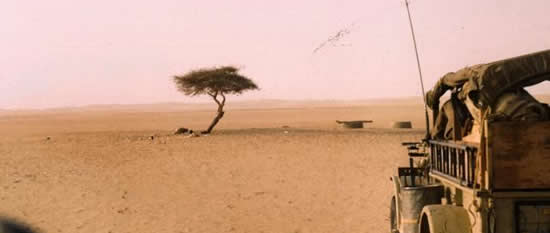Niger

The famous Tree of Ténéré in 1961, growing 400km from it’s nearest neighbor
Of the great geographic conundrums that consumed early European thinkers, the vital statistic of AfricaÂs great rivers absorbed more time and energy than any other. In the matter of the Nile, the Zambezi and the Congo it was a question of their sources. In the matter of the Niger River, the defining waterway of West Africa, it was it’s delta. It was this quest that brought the enigmatic 18th century Scottish explorer Mungo Park to the region, which in turn brought into the European field of knowledge one of the seats of ancient African culture, and one of the most fascinating countries of the continent.
Among the largest countries in Africa, and one of the poorest in the world, Niger straddles the unpromising zones of the Sahel and the Sahara Desert. Most of itÂs area falls within the latter, and what agricultural production exists is in the south. Drought prone, and hunger prone, Niger is nonetheless a rewarding travel destination. From the Niger River in the south to the quintessential Sahara Desert landscapes of the north, there is much to see and do. Niger is a culturally diverse nation that bridges the Arab north with the black south, and has traditionally been a safe and accessible travel destination.
Travel To & Within Niger
Flights To Niger Hotels In Niger
Why Travel to Niger
Niger is principally a landscape and culture destination, although with one notable exception. This is the extraordinary Parc Regional du W, so named for a series of meanders in the Niger River that resemble the letter W. The park actually overflows into Burkina Faso and Benin, and by regional standards it is an unusually well preserved wildlife destination. It hosts the principal members of the Big Five group  Elephant, Lion, Hippopotamus, cheetah and buffalo.
The defining features of the country are the desert and Niger River. Of the desert landscapes none can compete with the Aïr Mountains, a vast plateau in the midst of the desert that supports an island of Sahel/woodland ecology, a diversity of wildlife, and many archeological and geological treasures.
East of the Aïr lies the Ténéré Desert, a sand ocean some 150 000 km² in extent, and with a silent, uniform and desolate beauty unparallel on planet earth.
In the south of the country, and along the lush east bank of the Niger River, is situated the state capital Niamey. An oasis in itself, Niamey is a conservative although energetic and vibrant city. It boasts a small but vital collection of museums and cultural centers, including the Niger National Museum that holds the relic of the Tree of Ténéré. This, at one time, stood as the most isolated tree in the world until it was reportedly knocked over by a Libyan drunk driver, after which it was uprooted and has stood ever since as an unusual cultural/natural exhibit.
When to Travel To Niger
The coolest and driest period of the year in Niger is between late November and February. This is generally considered the best time to visit.
Travel Warning
If you intend to travel overland to or through the northern quadrant of the country it is best to do so through an organized tour. The remote border regions of the country are inherently unstable with a tendency to lawlessness. People do travel into these regions, and it is definitely worth doing, but in doing so you need to be aware of the risks.
Niger is a predominately Moslem country so a theoretical risk of terrorism exists.
Niger is also one of the poorest countries in the world, so it goes without saying that there is a high level of petty crime, and as a rule you should avoid inter-city travel at night, and after dark you should exercise a high degree of vigilance in the capital city, and in any urban areas.
Niger is bring drawn into the general West African fraud and scam market which is a huge business in the region. These can be extremely cunning, and can represent a significant financial loss if you are netted.